Monday, 5:00pm
5 June 2023
The Panther experience
New York’s Poster House explores the graphics at the heart of the Black Power movement. Robert Newman reports
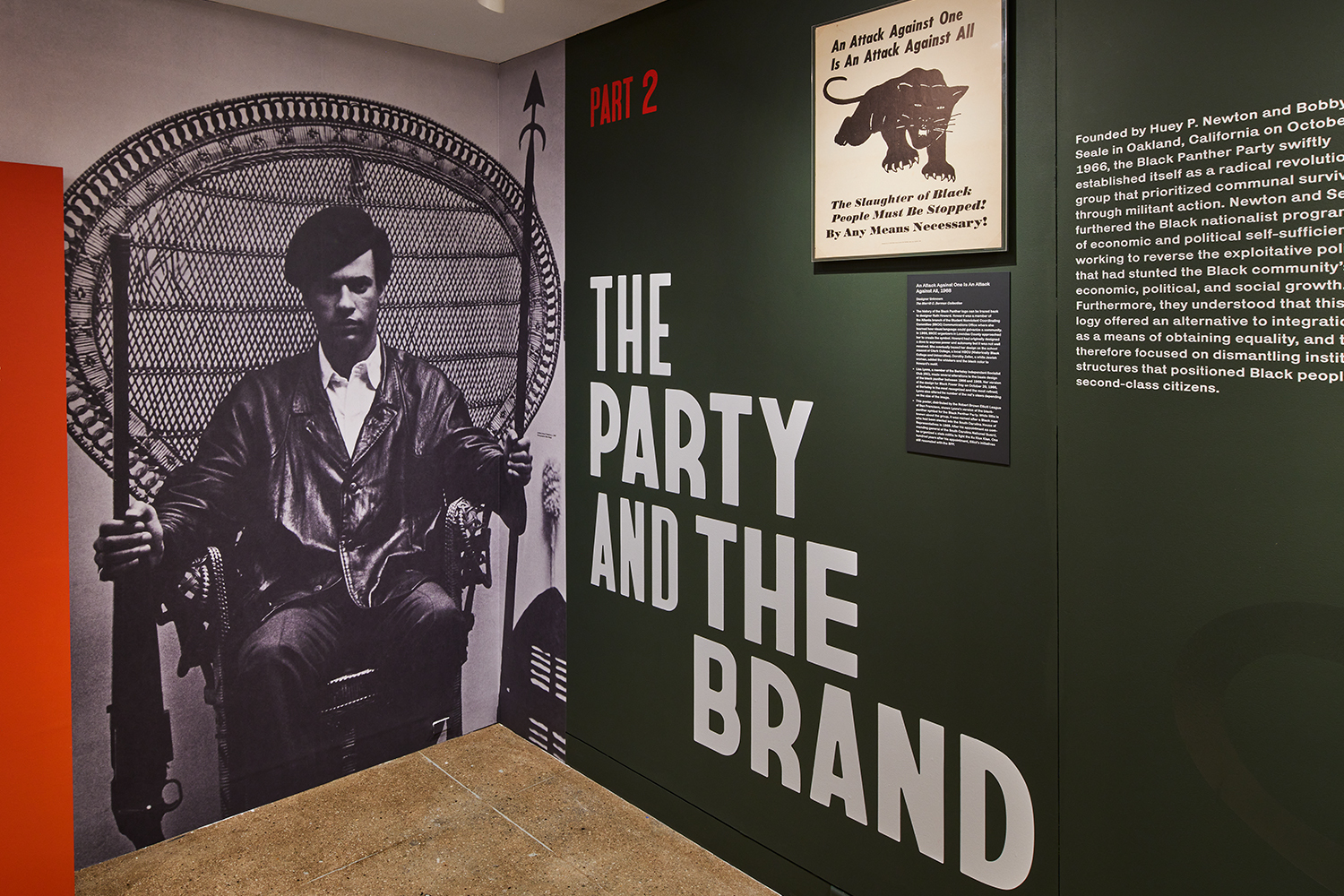
The ‘Black Power to Black People: Branding the Black Panther Party’ exhibition on display until 10 September 2023 at the Poster House in New York City is a powerful and inspirational collection of important cultural and political work presented in an exciting, thought-provoking style, writes Robert Newman.
The late 1960s and early 1970s were explosive times, politically, in the United States. In addition to nationwide campus and community demonstrations against the war in Vietnam, the war at home between the Black Panthers and the police, the FBI, and the Nixon Administration was escalating. Panthers were harassed, jailed, beaten and driven out of the country. Many were shot and killed by law enforcement. The Black Panther paper was like an apocalyptic missive delivered from behind enemy lines, filled with bold, provocative illustrations, graphic photographs and declarative headlines that jumped right off the page, all wrapped in brilliantly produced two-colour, poster-like covers. It was the design, graphics and the overall branding of the paper (and the Party) that helped make their message so powerful and appealing.
‘Black Power to Black People: Branding the Black Panther Party’ exhibition. Exhibition design by KASA Collective. Photos by Samuel Morgan Photography. Top. Entrance to the exhibition, featuring photo by Blair Strapp of the Black Panther Party co-founder Huey P. Newton.
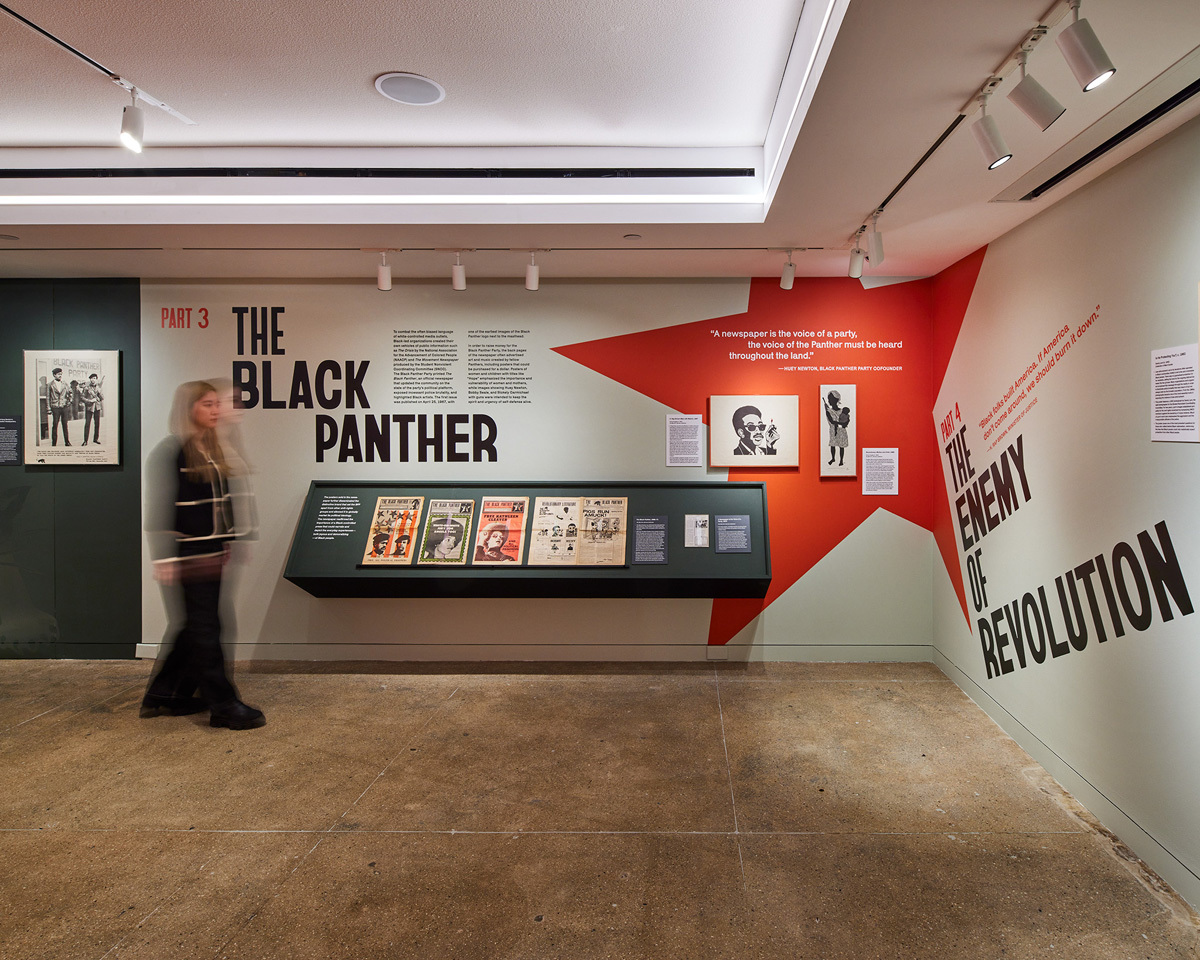
The current show at the Poster House was curated by Es-pranza Humphrey, who in an interview on its site, explains that she ‘tried to create an experience that didn’t centre on brutal or violent imagery, but imagery that was uplifting of the Black experience.’ The show reveals the humanity of the Party, giving special attention to the role of Black Panther women in developing the newspaper and other graphics.
A series of protest sign-like graphics introduce the viewer to the exhibition. The first image you see is the iconic photograph by Blair Strapp circa 1967 (top image), which fills an entire wall of the exhibit. In it, the Black Panther Party co-founder Huey P. Newton is sitting in a wicker chair, holding a rifle in one hand and a spear in the other. Through a dazzling juxtaposition of Black Panther newspapers, posters, album covers, books, buttons, photographs and more, the exhibit creates a visual story of politics, revolution and culture.
Designer Unknown, An Attack Against One is an Attack Against All, 1968.
The heart and soul of the exhibition is the work of Emory Douglas, who as the Party’s Revolutionary Artist and Minister of Culture art directed and illustrated the newspaper, effectively becoming the Party’s ‘brand designer’. His distinctive, provocative full page illustrations and explosive two-colour cover design, along with the Black Panther image (which pre-dated Douglas), define so much of what the curator contends is the Black Panther brand.
There are many highlights: a hand-drawn Free the Soledad Brothers poster from 1970, Douglas’s brilliant 1967 portrait of Black Power activist H. Rap Brown, and the many photographic portraits of charismatic leaders such as Angela Davis and Kathleen Cleaver. Many of the pieces are labelled ‘designer unknown’. At times, their visual language is so raw, they look like punk rock posters. One of my personal favourites is the 1969 Power to the People poster, which reads ‘Free the New York Panther 21’ and incorporates fluorescent colours and psychedelic patterns.
Designer unknown, Power to the People, 1969.
Front covers of The Black Panther papers, featuring activists Angela Davis (left) and Kathleen Cleaver (right).
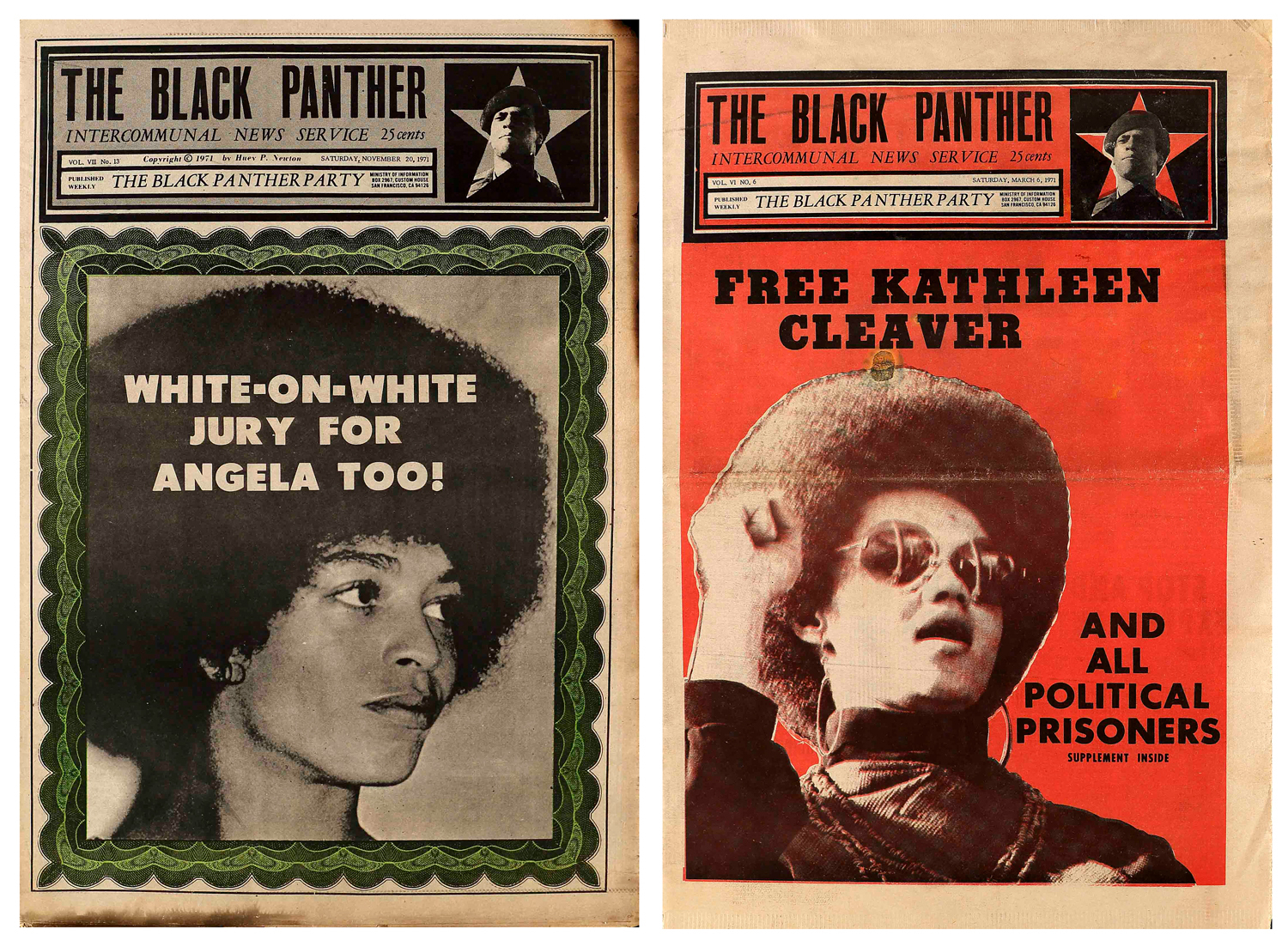
A great visual story is being told here. As you move through the room, it unfolds on multiple levels. Rather than being treated as leftovers, the miscellaneous single objects, such as Elaine Brown’s LP or Bobby Seale’s book, end up being a greater part of the whole story. There are lyrics available for the songs played in the background and there is a big, bold poster to take away, Black Power to Black Women, with details about various Black Panther women activists on the back.
The exhibition design is by the KASA Collective, who have done numerous museum exhibits, including the ‘Made in Japan’ poster show (also currently on display at the Poster House), as well as costumes and tour designs for Cirque du Soleil and Katy Perry. Their website has a thorough photographic look into this exhibition design, which is well worth checking out.
The exhibition is divided into six sections. Part five looks at the politics of Black Power, featuring ephemera from the Black Panther members who ran for office at local and state levels. Photo by Samuel Morgan Photography.
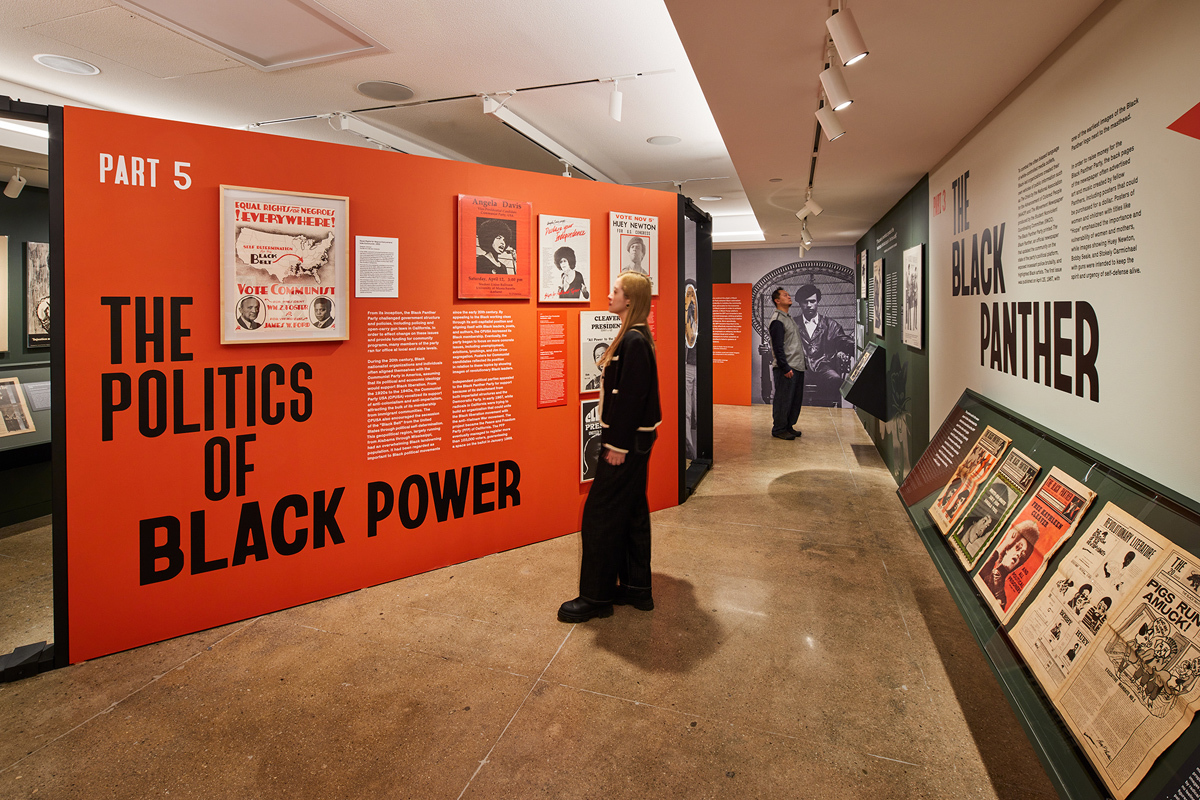
The lyrics to the songs played in the background are accessible for audience in print. On display are Seize the Time book by Bobby Seale and Seize the Time LP by Elaine Brown. Photo by Samuel Morgan Photography.
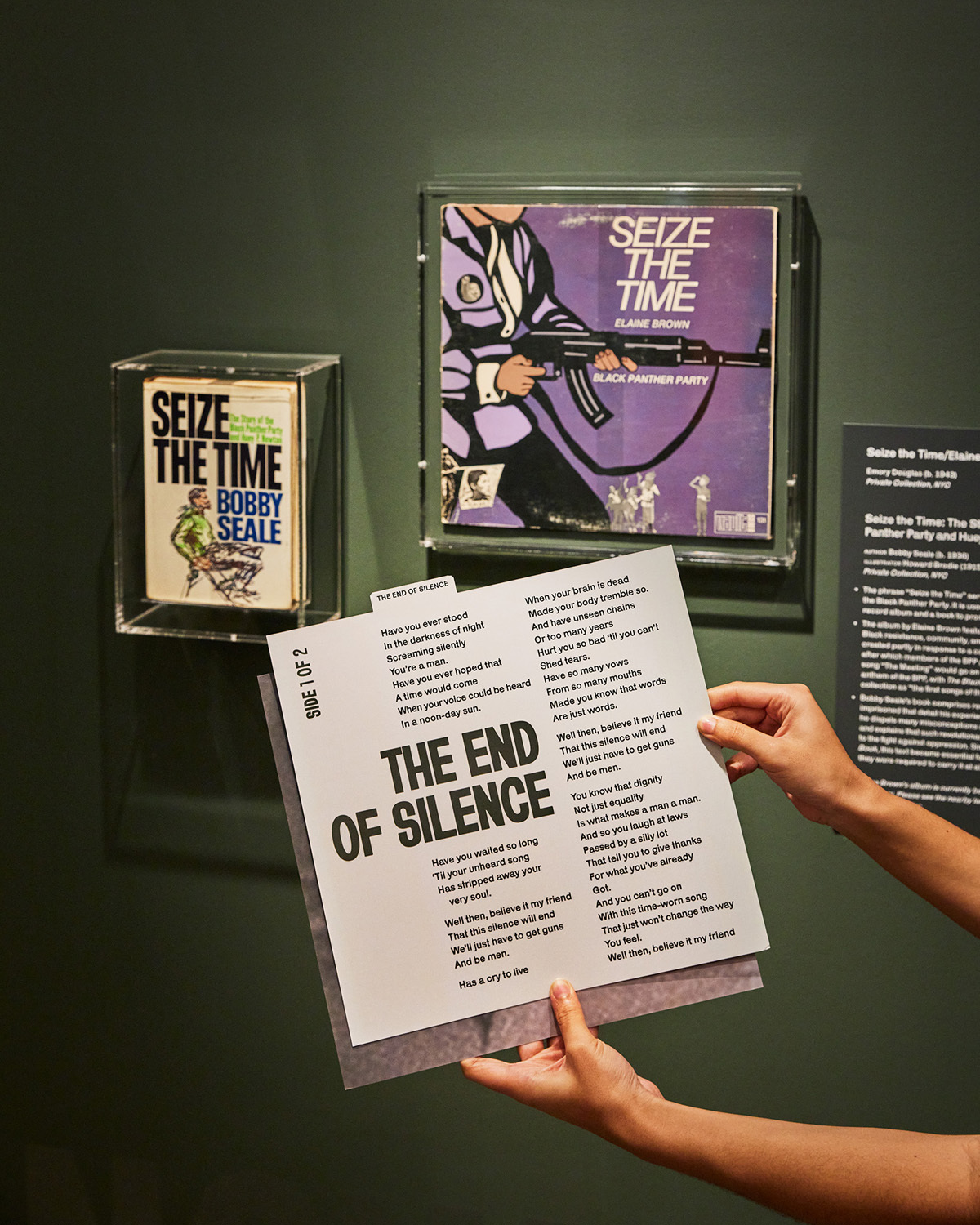
In the summer of 1971 I was eighteen, fresh out of high school and working as a maintenance helper deep in the basement of the public hospital in Buffalo, New York. It was a rough and tumble place: prisoners from Attica were brought in for medical procedures in arm and leg chains; you could still see the bullet holes in the lobby walls where a prisoner had grabbed a guard’s gun and escaped in a shoot-out a few years earlier. (The Attica Prison Rebellion would take place at the end of the summer of that year.) We worked several levels underground and rarely saw sunlight during the day. Most of the maintenance workers were Black, and they often spent their lunch breaks passing around a copy of the latest The Black Panther newspaper. By the time it got to me (usually last, being the youngest and whitest …), the paper was ragged, smudged and torn apart; extremely well read and well viewed. To me, it was the most electrifying publication I had ever seen. I had always been enchanted by underground and leftwing newspapers of the late 1960s and early 70s, but something about The Black Panther newspaper was magical to me.
Cover of The Black Panther paper from January 1970, demanding the release of Party’s co-founders Bobby Seale and Huey P. Newton.
‘Black Power to Black People: Branding the Black Panther Party’ is not a definitive history of Black Panther / Black Power graphics. It is a well curated selection, organised to tell the story of visual branding, and the exhibition design and structure does that extremely well. My only criticism of the exhibit, and it’s a minor one, is that there are a couple of places where I was confused by bold images from earlier eras that did not seem to fit into the Black Panther / Black Power narrative.
But having seen this show now five times, I always find something new to marvel about. It is one of those rare exhibitions that teaches, inspires and entertains all at the same time. There is something for everyone here: your kids, your designer friends, artists, political activists, and of course, anyone who was around back in the day.
Robert Newman, magazine art director, New York City
Eye is the world’s most beautiful and collectable graphic design journal, published for professional designers, students and anyone interested in critical, informed writing about graphic design and visual culture. It is available from all good design bookshops and online at the Eye shop, where you can buy subscriptions and single issues.
